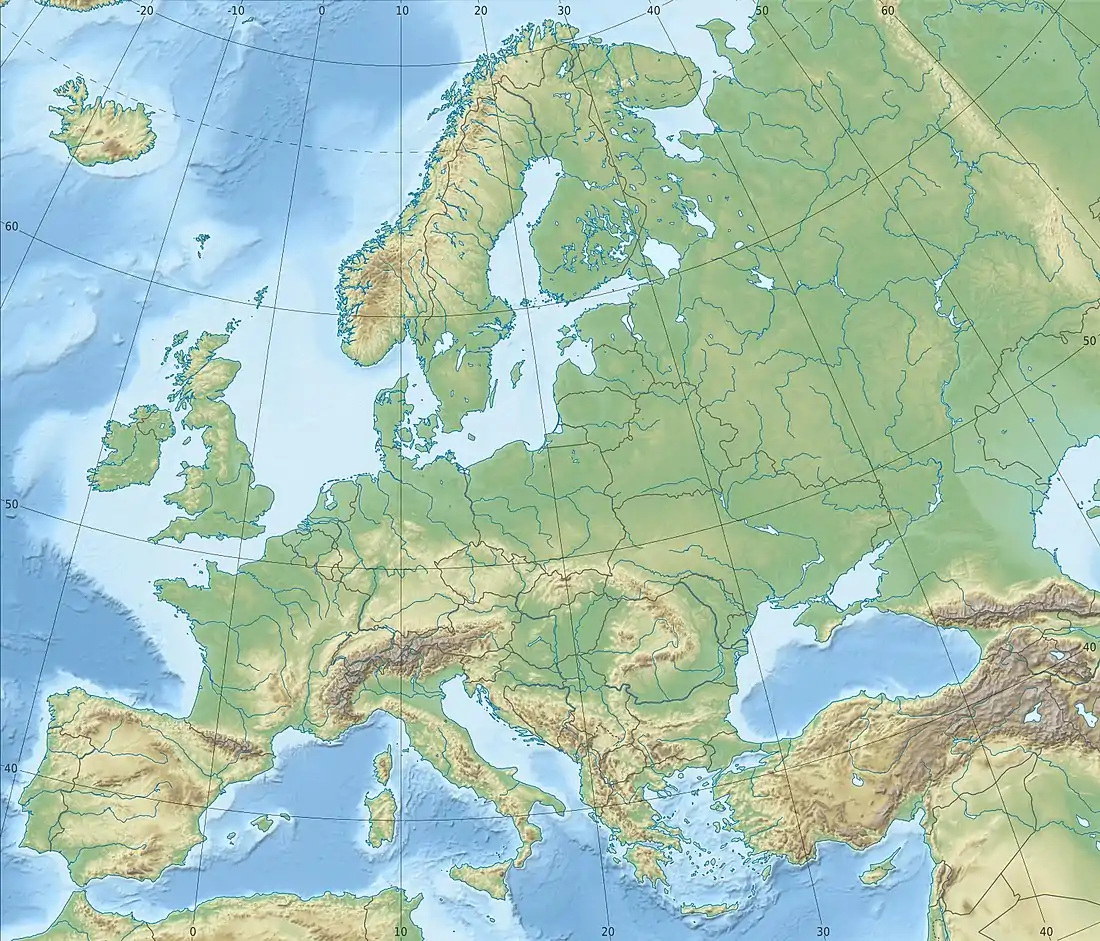| Battle of Verdun (1792) | |||||||
|---|---|---|---|---|---|---|---|
| Part of the War of the First Coalition | |||||||
 The body of Colonel Beaurepaire leaving Verdun after the battle. | |||||||
| |||||||
| Belligerents | |||||||
|
|
| ||||||
| Commanders and leaders | |||||||
|
|
| ||||||
| Strength | |||||||
| 4,000[1] | 40,000[1] | ||||||
 Location within Europe | |||||||
The first Battle of Verdun was fought between 29 August and 2 September 1792 between French Revolutionary forces and a Prussian army during the opening months of the War of the First Coalition. The Prussians were victorious, gaining a clear westward path to Paris.[2]
Battle
Colonel Nicolas-Joseph Beaurepaire, who had commanded the defense of Verdun, chose death by suicide to avoid the dishonor of surrendering Verdun.
See also
- Battle of Valmy on 20 September 1792
- Siege of Verdun (1870) in the Franco-Prussian War
- Battle of Verdun (1916) in World War I
Notes
- 1 2 3 4 Bodart 1908, p. 269.
- ↑ Parker 2008, p. 195.
References
- Parker, Geoffrey (2008). The Cambridge Illustrated History of Warfare. New York: Cambridge University Press. p. 195. ISBN 978-0-521-73806-4. Retrieved 22 January 2012.
- Bodart, Gaston (1908). Militär-historisches Kriegs–Lexikon (1618–1905). Retrieved 4 July 2022.
External links
 Media related to Battle of Verdun (1792) at Wikimedia Commons
Media related to Battle of Verdun (1792) at Wikimedia Commons
| Preceded by French Revolution |
French Revolution: Revolutionary campaigns Battle of Verdun (1792) |
Succeeded by Siege of Thionville (1792) |
This article is issued from Wikipedia. The text is licensed under Creative Commons - Attribution - Sharealike. Additional terms may apply for the media files.